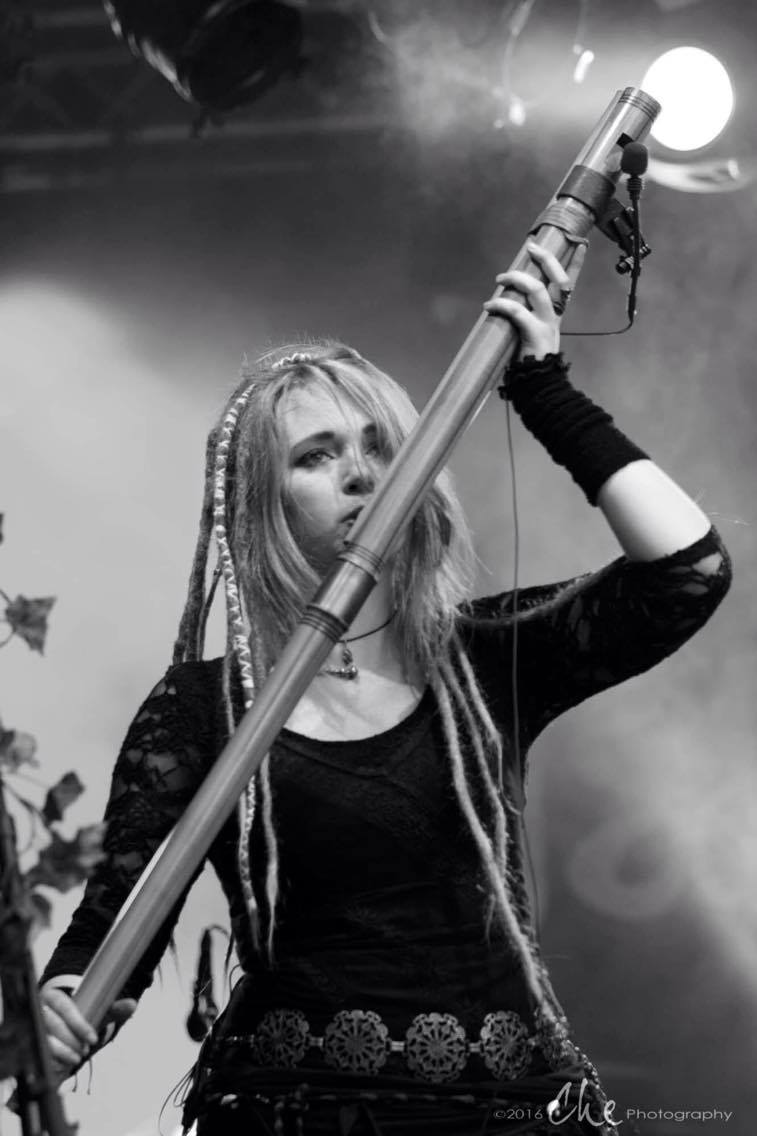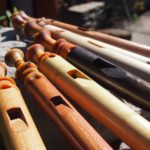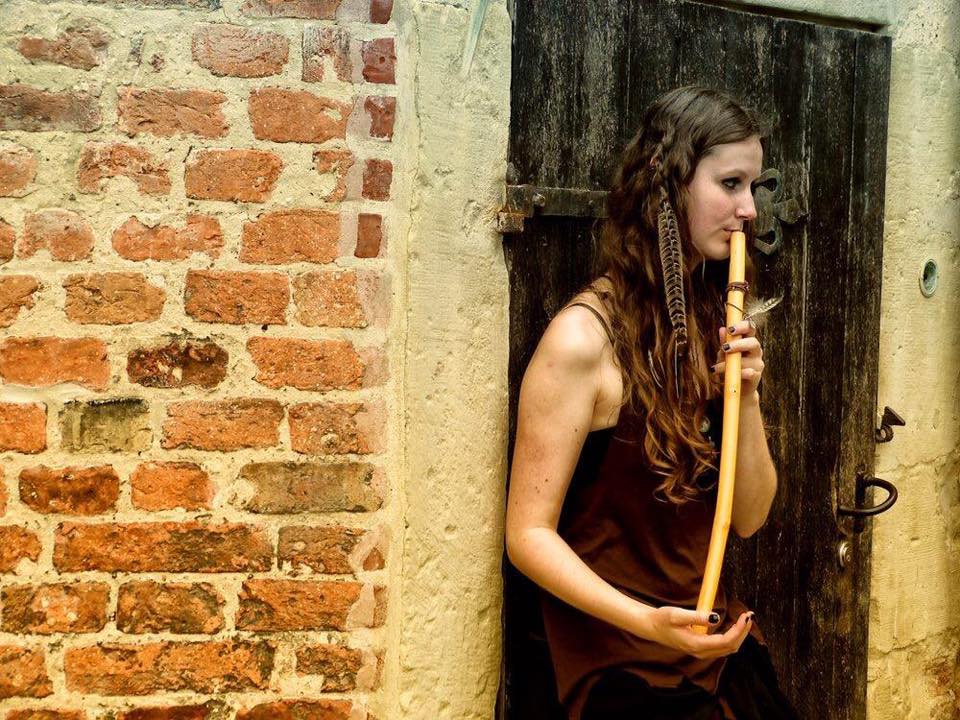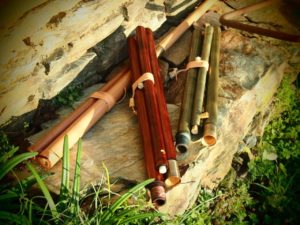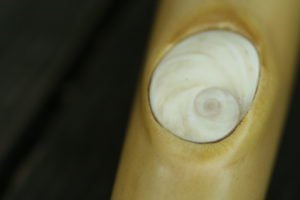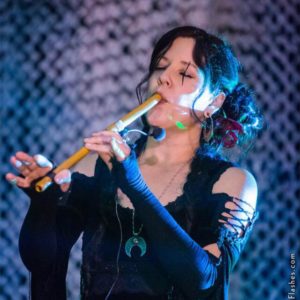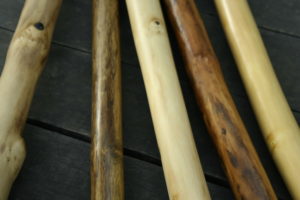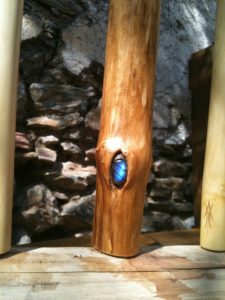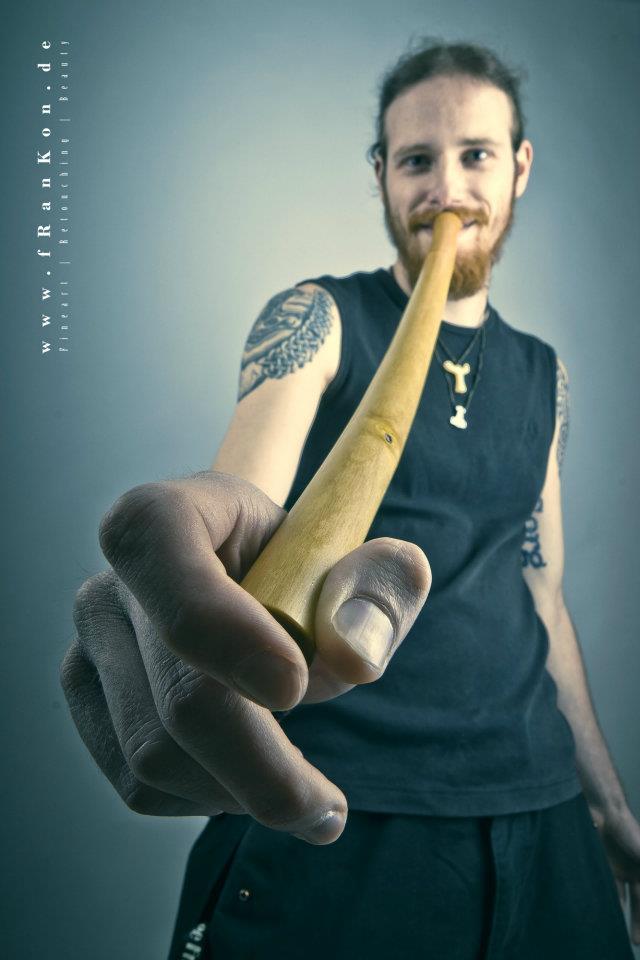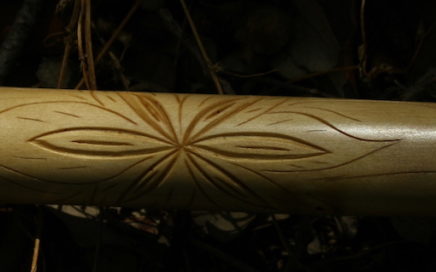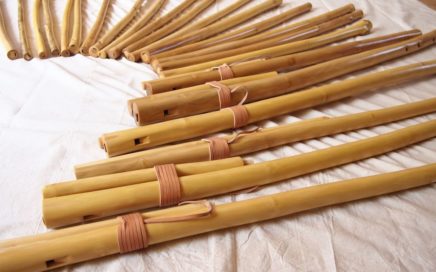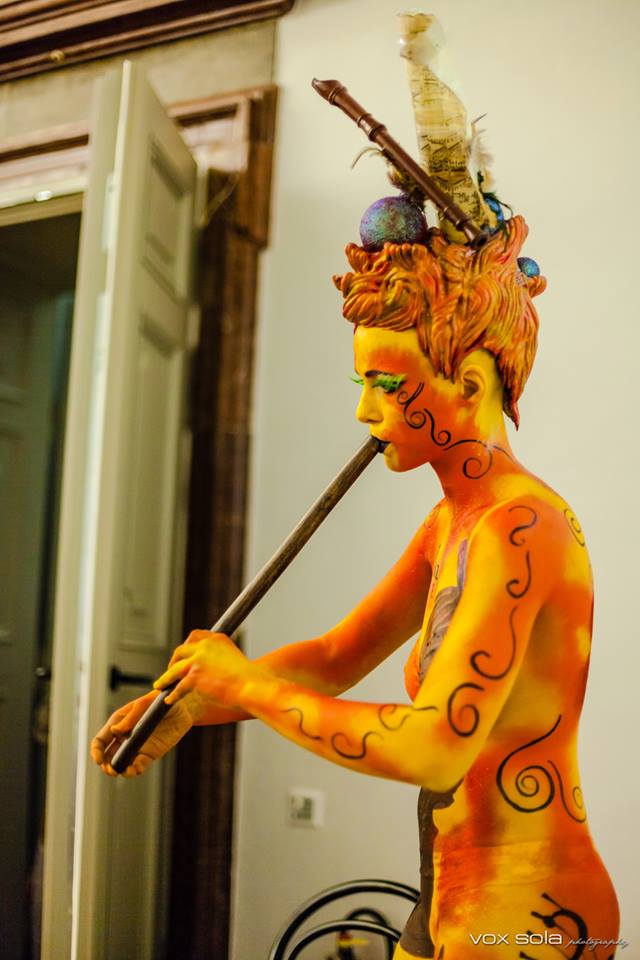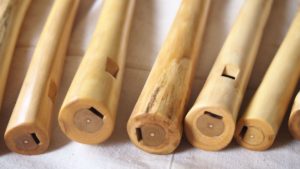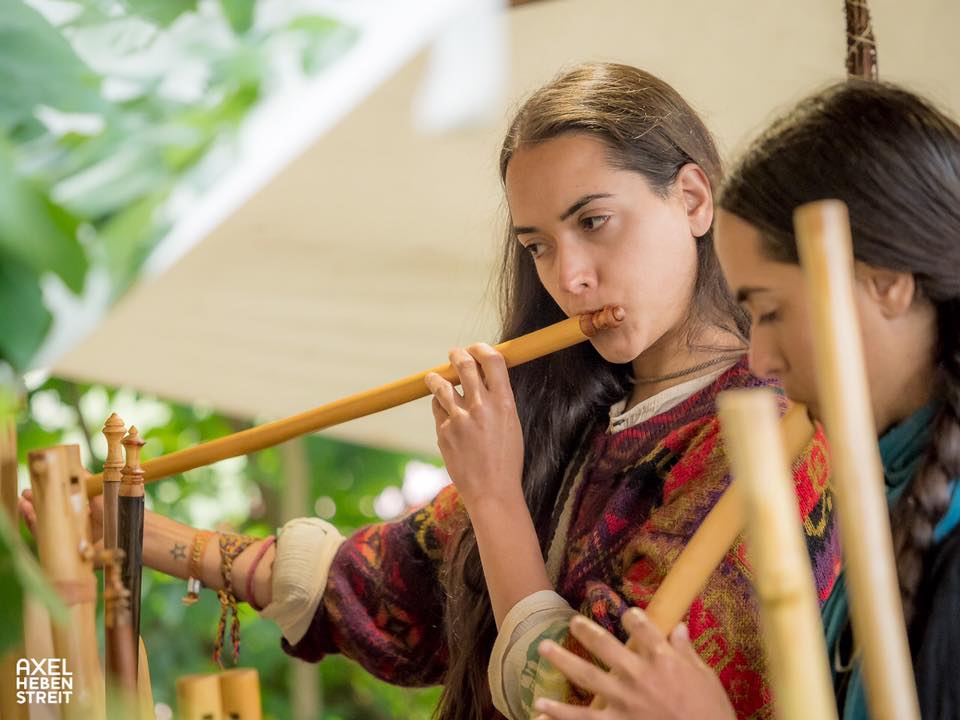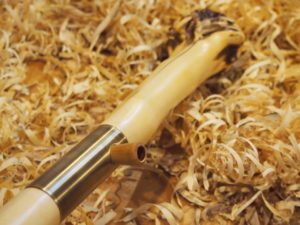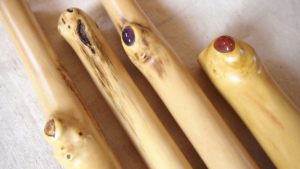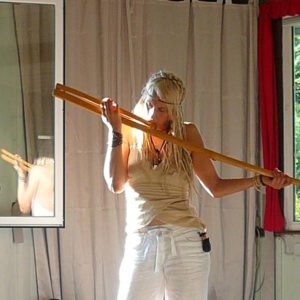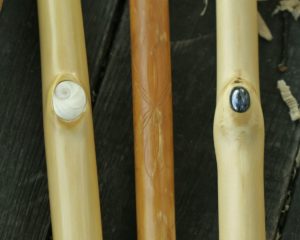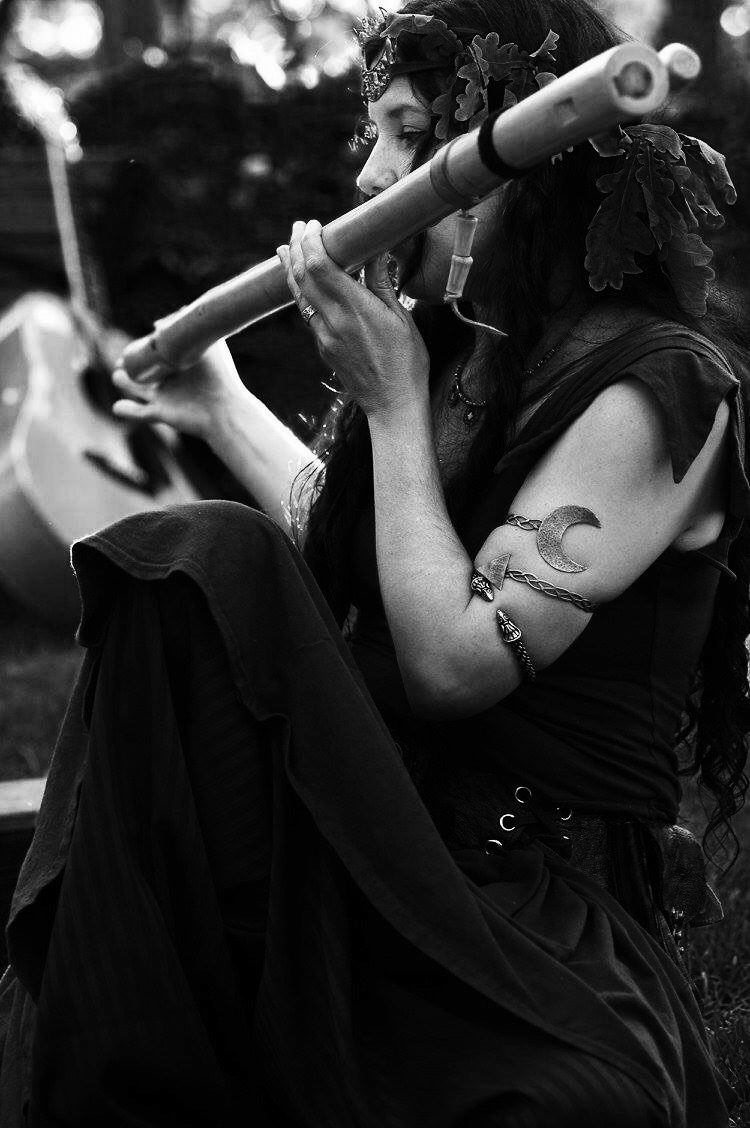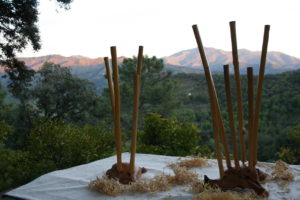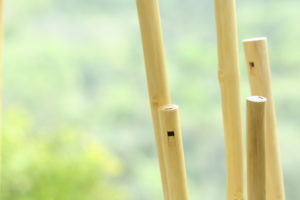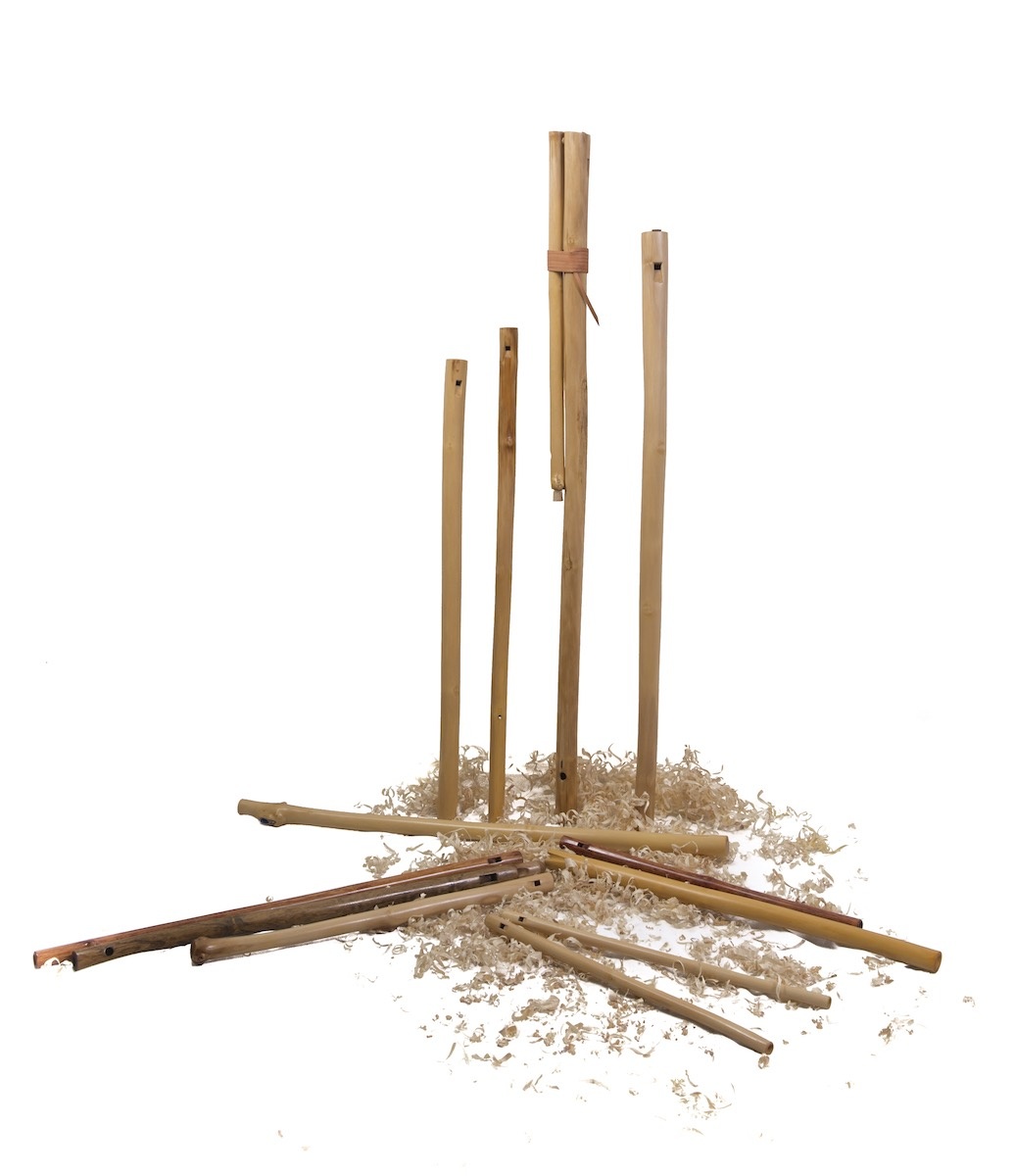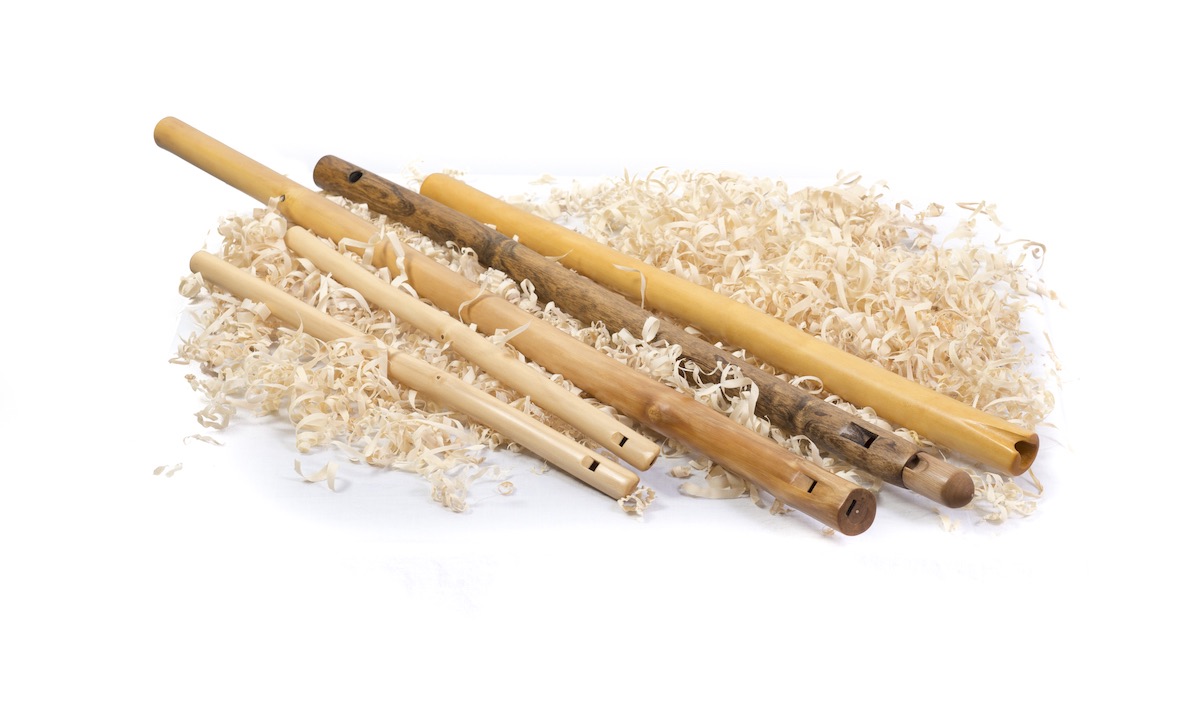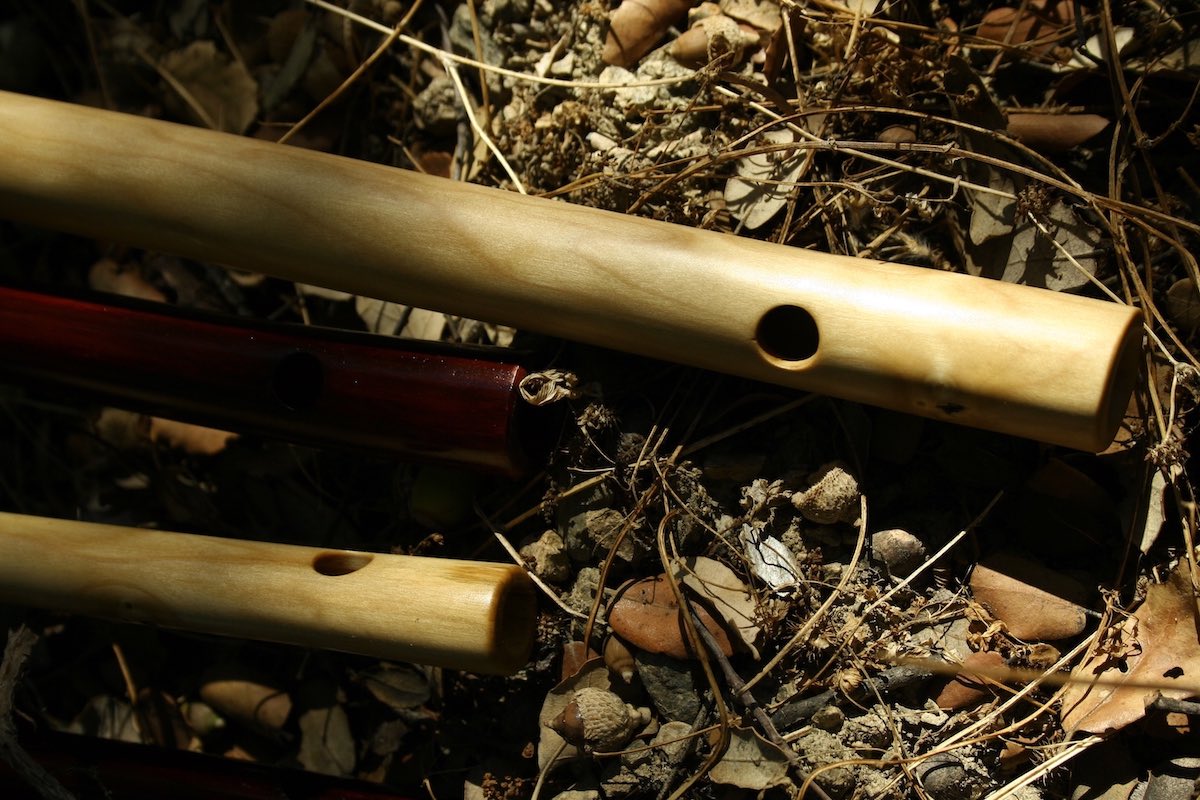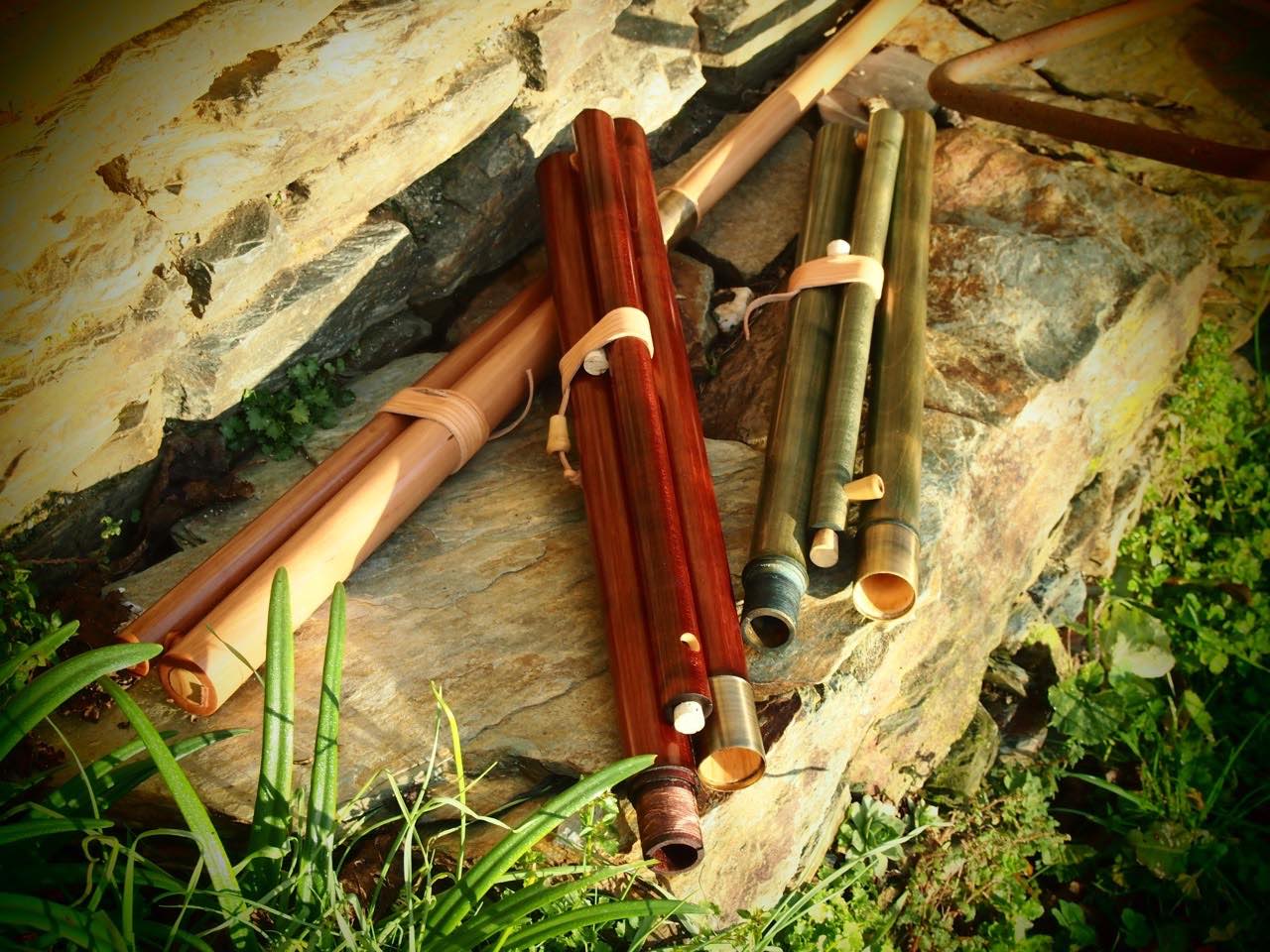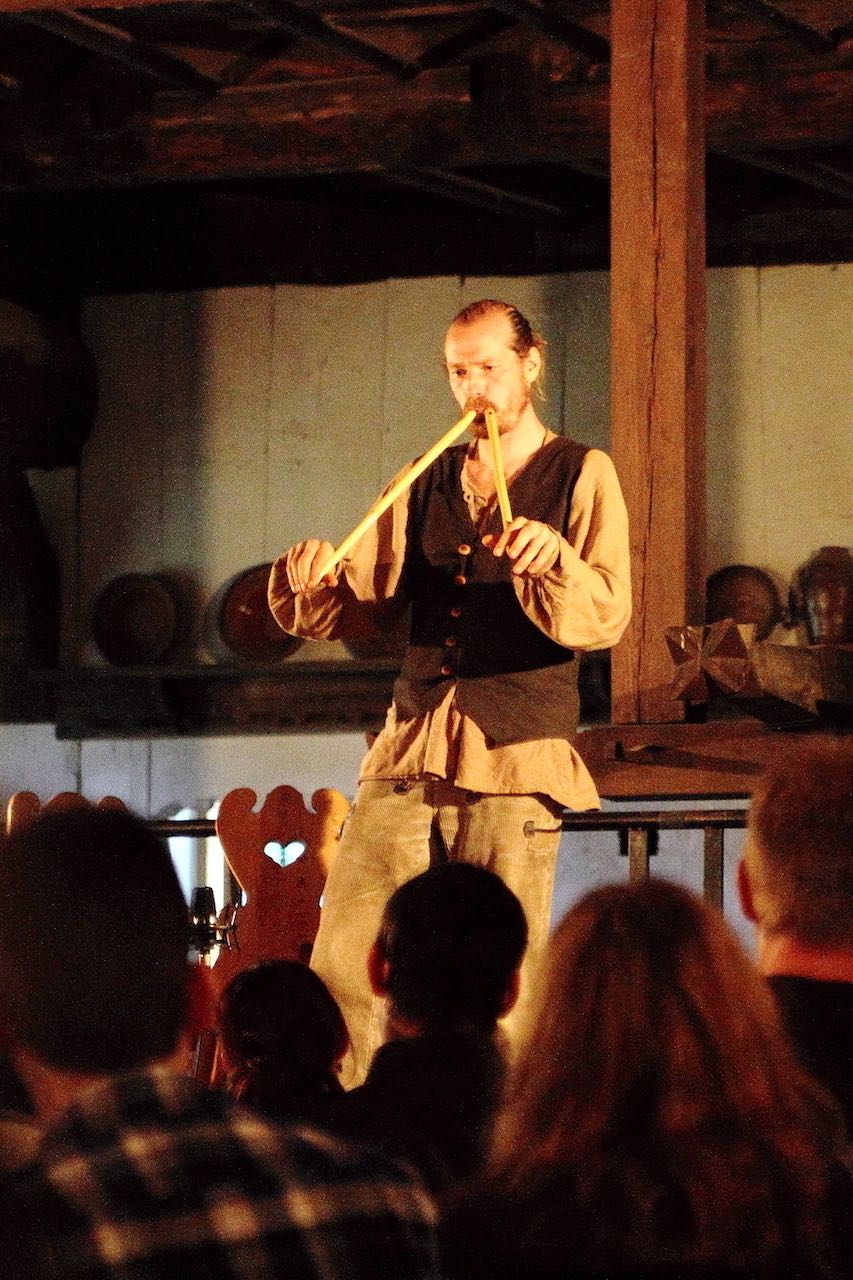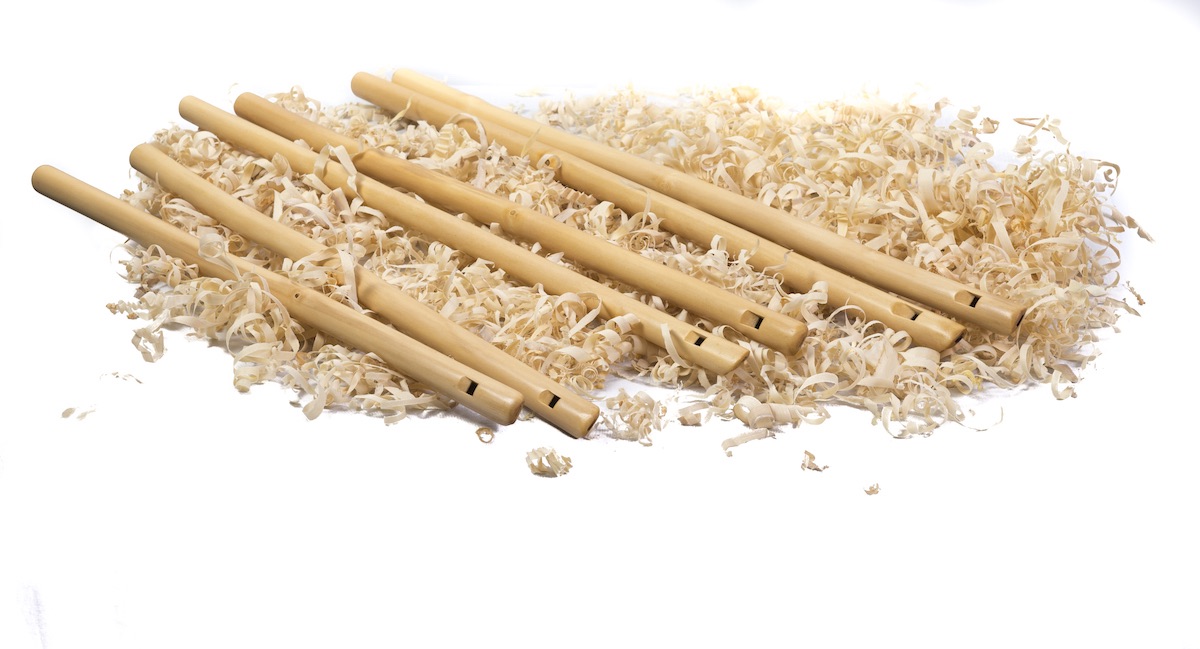An overtone flute is one of the oldest sorts of flute. It consists of a simple tube without any finger-holes that is blown on the top end. It is easy for anyone to learn because of its simplicity and the beauty of the natural harmonics of the overtone scale. By opening and closing the end-hole and varying the amount and strength of air blown through it, the archaic and other-worldly overtone scale is easily produced.
I make flutes of varying lengths and inside diameters, all of which produce different sorts of sound in various pitches and registers. The overtone flute is available in two forms; as a fipple flute with a carefully crafted mouthpiece like a recorder, or as an open-ended notched flute similar to the S.American 'Quena'. ( check out: how to play overtone flute )
History:
To this day the traditional overtone flute is still played in Scandinavia where it is known as the 'Seljefløyte' ('willow flute' or 'sallow flute'). It can also be found further afield in the Balkans and eastern Europe. It is also known in Italy as a traditional folk-instrument often used to play the 'Tarantella'.
A woodcut from the sixteenth century book 'Cosmographie' by Sebastian Münster illustrating the section on the Black Forest shows an overtone flute-player and a bagpiper. It would appear then that -just as with the bagpipes with a single reed in the chanter- in the Balkans are the last vestiges of traditions once common throughout Central Europe.
(More at www.obertonfloete.de)
The medium and small sized flutes have various types of mouthpiece.
The straight mouthpiece is the simplest and more convenient one.
The beak-like form is familiar to many people from the recorder. I also make a special narrower version for the double-flutes.
The side-blown type is common in Italy and Scandinavia. Bear in mind that the sound is produced very close to the ear.
Somewhat harder to play is the aforementioned 'Quena' (or 'Kena') type, which produces a wider variety of tonal qualities.
{In the pictures from left to right: Double-flute with beak-form; with straight mouthpiece; side-blown; Quena type.}
The collapsible version of the overtone-flute, made of maple wood, stained in red or green.
It can be made with the Fujara finger-holes, to be played as Fujara and overtone flute.
other tunings on request
Ask for my price list
on the right a recording of an Overtoneflute in G (ca. 880mm long)
recorded in Mirepoix, France
on the left an overtone flute in D (570mm) played by Fiona Rüggeberg
'Nahtegal' on the Album 'Buch der Balladen'

